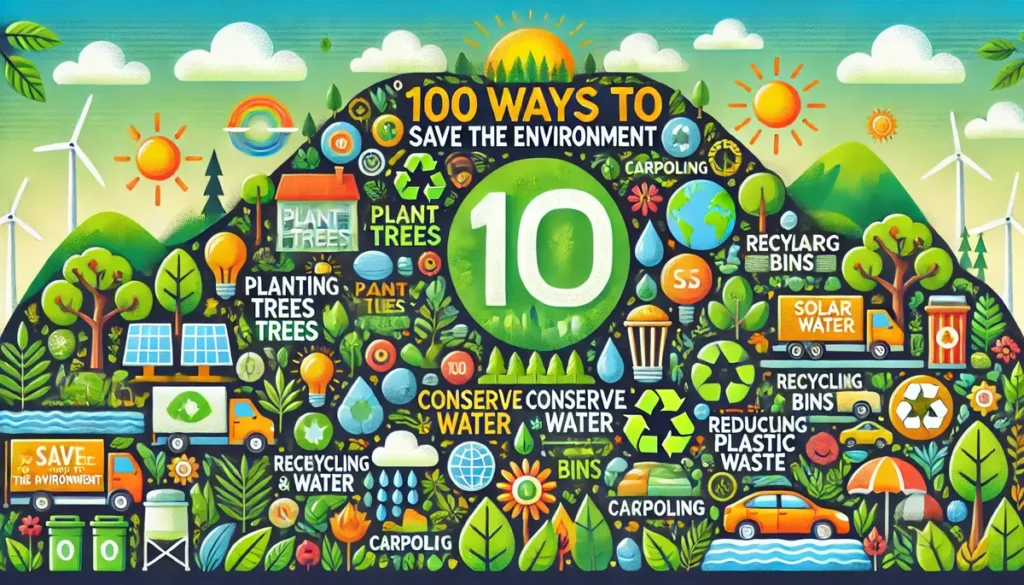Did you know that an average person generates nearly 2 kilograms of waste daily? That’s like throwing away the weight of a large watermelon daily! Now imagine this multiplied by over a billion people in the country. That’s a lot of waste in landfills, rivers, and streets, harming the environment around us.
Our planet is facing big problems like pollution, climate change, and disappearing forests. But here’s the good news: you can help fix it. You don’t need to do something huge. Even little acts, such as turning off lights or using reusable water bottles, bring a positive change.
In this blog, you’ll find 100 ways to save the environment. These ideas are simple and easy for anyone to follow. You’ll learn how to save water, use less energy, and reduce waste—all while helping protect the planet.
Let’s start by looking at the 10 most important ways to save the environment. Are you ready to make a change? Let’s go!
10 Most Impactful Ways to Protect the Environment
- Avoid using plastic bags.
- Avoid wasting water.
- Turn off lights when not in use.
- Plant more and more trees.
- Do not throw food.
- Use public transportation.
- Use sustainable and biodegradable products.
- Donate things you do not need.
- Dispose of the wastes properly.
Did You Know?
The average Indian household wastes 30-40% of its water due to leaking taps, inefficient practices, and lack of awareness? Fixing leaks alone can save hundreds of liters daily.
100 Ways to Save the Environment
1. Water Conservation
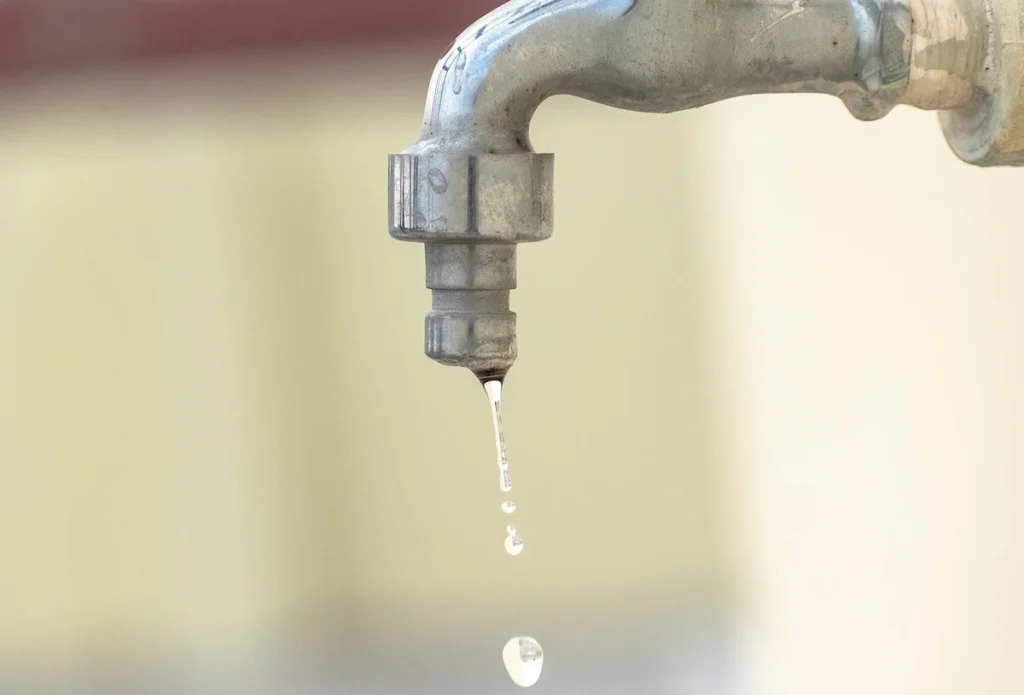
- Fix leaky taps immediately.
- Install a rainwater harvesting system.
- Use a bucket instead of a hose for washing cars.
- Water plants early in the morning or late evening to reduce evaporation.
- Reuse water from rinsing vegetables for plants.
- Avoid flushing tissues and small trash into toilets.
- Invest in water-efficient appliances like dishwashers.
- Check your water meter for hidden leaks.
- Use low-flow showerheads and taps.
- Avoid overwatering plants; use a sprinkler with a timer.
- Turn off taps while brushing your teeth.
- Educate your family about the importance of water conservation.
- Build a greywater recycling system for non-potable uses.
- Cover pools to reduce evaporation.
- Use mulch in gardens to retain soil moisture.
2. Energy Saving
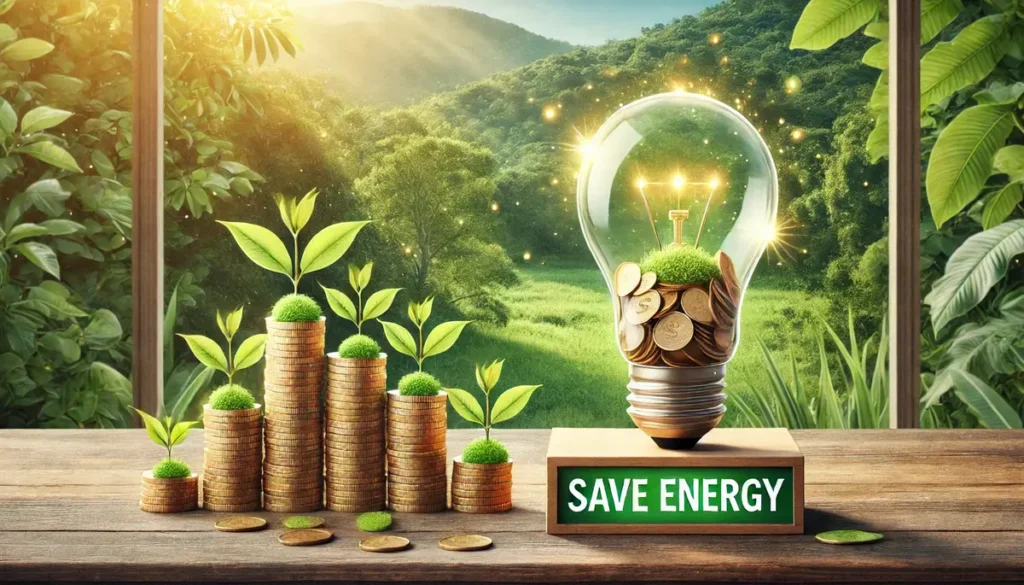
- Replace incandescent bulbs with LED lights.
- Unplug devices when not in use.
- Use natural light during the day.
- Set your thermostat to energy-saving modes.
- Insulate your home to maintain indoor temperatures.
- Use solar panels for electricity.
- Wash clothes in cold water.
- Hang clothes to dry instead of using a dryer.
- Switch to energy-efficient appliances.
- Turn off your computer instead of leaving it in sleep mode.
- Use power strips to cut off phantom energy use.
- Opt for energy-efficient ceiling fans instead of air conditioners.
- Seal windows and doors to prevent air leaks.
- Use motion-sensor lights outdoors.
- Cook with lids on pots to save gas and electricity.
3. Waste Reduction
- Say no to single-use plastics.
- Carry a reusable water bottle.
- Use cloth bags for shopping.
- Avoid products with excessive packaging.
- Compost food scraps.
- Donate old clothes and furniture.
- Buy second-hand items.
- Repair items instead of replacing them.
- Use reusable lunch boxes and utensils.
- Avoid paper towels; use cloth rags instead.
- Recycle electronics properly.
- Use rechargeable batteries.
- Opt for digital receipts instead of paper ones.
- Start a recycling station at home.
- Encourage kids to upcycle crafts using waste materials.
Challenge For You
Keep track of all single-use plastics you avoid for a week. You’ll be surprised at how much waste you’ve reduced!
4. Sustainable Living
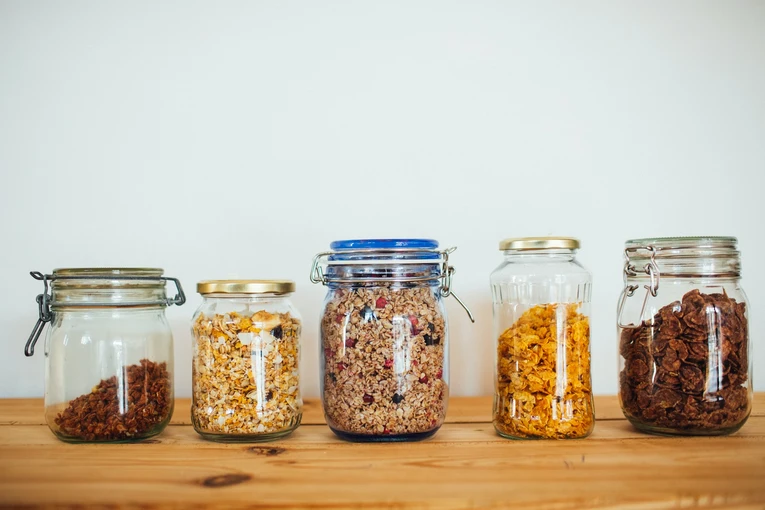
- Grow your own vegetables.
- Switch to plant-based diets.
- Use natural cleaning products.
- Avoid fast fashion; buy sustainable clothing.
- Support brands that prioritize sustainability.
- Use eco-friendly menstrual products.
- Reduce food waste by planning meals ahead.
- Buy in bulk to reduce packaging.
- Make your own compost at home.
- Create a “zero-waste” kit with essentials like utensils and napkins.
- Choose biodegradable products.
- Practice minimalism to avoid overconsumption.
- Walk or cycle to nearby destinations.
- Participate in local tree-planting drives.
- Learn and teach others about environmental issues.
A Short Story
A family in Kerala replaced chemical cleaners with vinegar and baking soda. Not only did it reduce harmful waste, but it also saved them money and improved indoor air quality.
5. Transportation
- Use public transportation.
- Carpool with friends or colleagues.
- Walk short distances instead of driving.
- Use bicycles for daily commuting.
- Invest in an electric vehicle.
- Avoid unnecessary trips; combine errands into one.
- Use cruise control to save fuel on highways.
- Keep your vehicle well-maintained for better efficiency.
- Turn off your engine when idling for long periods.
- Explore car-sharing platforms.
- Offset carbon emissions from travel.
- Opt for eco-friendly rideshare options.
- Reduce air travel by attending virtual meetings.
- Choose trains over flights for domestic travel.
- Limit the use of delivery services by consolidating orders.
6. Community Actions
- Start a community clean-up drive.
- Organize awareness campaigns in your neighborhood.
- Share eco-friendly tips on social media.
- Teach children about environmental conservation.
- Volunteer for tree-planting events.
- Advocate for better waste management in your area.
- Support local farmers and buy seasonal produce.
- Collaborate with schools to start recycling programs.
- Encourage businesses to adopt sustainable practices.
- Join or form a “green club” in your locality.
- Donate to environmental conservation organizations.
- Work with local leaders to implement eco-friendly policies.
- Install community rainwater harvesting systems.
- Create wildlife-friendly zones in parks.
- Arrange workshops on composting and recycling.
7. Eco-Friendly Gardening
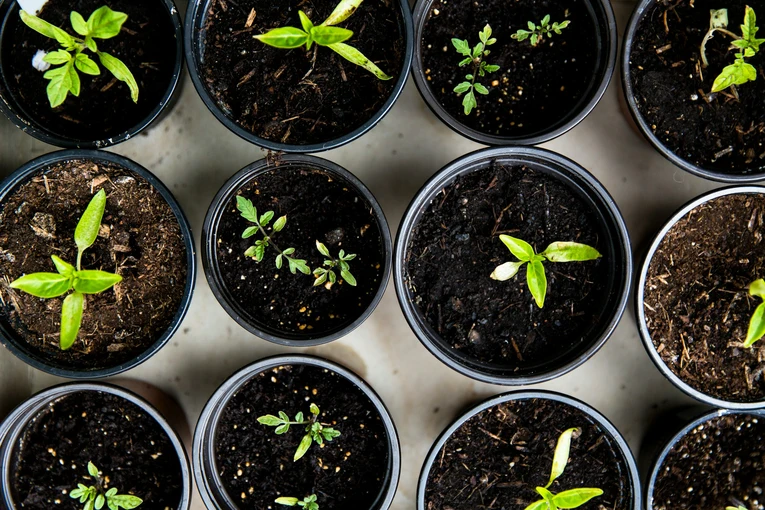
- Avoid chemical pesticides; use natural alternatives.
- Use organic fertilizers like compost.
- Plant native species that require less water.
- Collect seeds from fruits and vegetables to plant later.
- Attract pollinators like bees with flowering plants.
- Mulch your soil to prevent erosion.
- Create a small pond for birds and insects.
- Build a vertical garden to save space.
- Use drip irrigation for water efficiency.
- Grow plants that improve air quality, like aloe vera and snake plants.
Fact: Bees pollinate 75% of the world’s crops. Planting flowers like marigolds and sunflowers can help these pollinators thrive.
8. Office and Workplace
- Switch to digital documents instead of printing.
- Use energy-efficient office equipment.
- Encourage coworkers to use reusable cups and bottles.
- Reduce screen brightness to save energy.
- Turn off office lights after hours.
- Promote carpooling among employees.
- Create a recycling station in the office.
- Use teleconferencing to reduce travel.
- Avoid disposable cups and plates during office events.
- Organize eco-friendly workshops for employees.
9. Miscellaneous Tips
- Avoid littering in public places.
- Donate old books to libraries.
- Use cloth napkins instead of paper ones.
- Support renewable energy initiatives.
- Reduce screen time to save electricity.
- Participate in Earth Hour by turning off lights for one hour annually.
- Install solar water heaters.
- Use eco-friendly gift wrapping like newspapers or cloth.
- Avoid unnecessary printing of school projects.
- Buy energy-saving fans and coolers.
- Create art from recycled materials.
- Start a school garden with vegetables and herbs.
- Write essays or make posters about saving the environment.
- Conduct a water-saving experiment at home.
- Organize a “reuse old items” competition.
Conclusion: 100 Ways to Save the Environment
As we’ve explored, there are more than 100 ways to save the environment, and each action truly counts, no matter how small.
Our planet’s health is directly linked to our well-being. When you make sustainable choices, you protect nature and build a better future for yourself.
Start small. Share these tips with your family and friends to inspire them to join you.
So, what will your first step be today? Remember, as Margaret Mead once said, “Never doubt that a small group of thoughtful, committed citizens can change the world; indeed, it’s the only thing that ever has.”
